
MAY CONTAIN NUTS

Search Shorpy
SHORPY ART

Framed or unframed, desk size to sofa size, printed by us in Arizona and Alabama since 2007. Explore now.
Join and Share
Ad-Free Shorpy
Shorpy is funded by you. Patreon contributors get an ad-free experience.
Learn more.

Recent comments
- Details, Details
- What's that building to the left of the tower?
- Coal Barges
- Bromo-Seltzer
- Inner harbor
- The Basin
- What a headache!
- Giant stepladder?
- Baldwin 62303
- Baldwin VO-1000
- Cold
- No expense spared
- Tough Guys
- Lost in Toyland
- And without gloves
- If I were a blindfolded time traveler
- Smoke Consumer Also Cooks
- Oh that stove!
- Possibly still there?
- What?!?
- $100 Reward
- Freeze Frame
- Texas Flyer wanted
- Just a Year Too Soon
- WWII -- Replacing men with women at the railroad crossing.
- Yes, Icing
- You kids drive me nuts!
- NOT An Easy Job
- I wonder
- Just add window boxes
Member Photos
The Shorpy
Print Emporium
Print Emporium
Search Shorpy
Search results -- 30 results per page
- Pontiac Depot: 1905
- ... and St. Louis. The line was later controlled by the Baltimore & Ohio after World War I and were bought by the Gulf, Mobile, and ... Posted by Dave - 08/10/2012 - 12:23am -
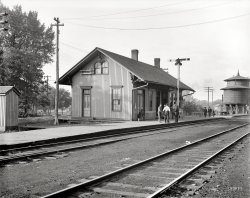
- Miriam: 1924
- ... three sons, Alexander III of Sykesville, Md., John, of Baltimore, and Christopher, of Bethesda; and one grandchild.
My mother as ... Posted by Dave - 09/13/2011 - 4:32pm -
![Miriam: 1924 Washington, D.C., circa 1924. "Miriam Auerbach." National Photo Company Collection glass negative. View full size.
R.P. Andrews Paper Co.The company was at 727 Thirteenth Street NW. The only thing of note I could find is that Louis F. Valentine, the company's Secretary-Treasurer, and his wife were killed in the collapse of the Knickerbocker Theater on January 30, 1922.
Her life storyPattyanne, I agree. I too wonder what their lives were like. I finally joined Shorpy today because of this story. I have been enjoying this web site for a long time.
ThanksI always wonder what lives people in these pics led. Always curious!!
To put a name to a facebrings a new dimension to these wonderful photos.
I always feel rather sad when Googling doesn't find just a bit of information to make the subject more "real."
CoincidenceMy maternal grandmother's maiden name was Wolf. My mother had a cousin named Miriam Wolf. However, she was a radio performer -- an actor on the radio show "Let's Pretend," usually playing a witch. My mother also had a cousin who married a man named Legum. They lived in Norfolk.
Miriam Auerbach Wolf, 1912-1978Washington Post, April 18, 1978.
Miriam A. Wolf, 65;
'Million Dollar' Realtor
Miriam Auerbach Wolf, 65, a retired real estate executive and the first woman to become a life member of the "Million-Dollar Sales Club" of the Washington Board of Realtors, died of cancer Sunday at her home in Bethesda.
Mrs. Wolf began her real estate career in 1957. At the time of her retirement in 1976 for reasons of health, she was associate manager for Legum & Berber. She was the recipient of several awards from the Board of Realtors for her residential transactions.
In addition to her business activities, Mrs. Wolf was founding president of the Montgomery County chapter of the National Council of Jewish Women. She was also the first president of the Montgomery County Thrift Shop, the proceeds of which benefit various charities.
During the Eisenhower Administration she served on the advisory committee of the President's Council on the Handicapped.
Mrs. Wolf was born in Washington and graduated from the old Central High School. She was a French teacher at Georgetown Day School in the 1950s before beginning her real estate work.
Survivors include her husband, Alexander Wolf Jr.; three sons, Alexander III of Sykesville, Md., John, of Baltimore, and Christopher, of Bethesda; and one grandchild.
My mother as a young girlMy first-cousin-once-removed Henry Brylawski (age 96) let me know that this picture was posted on the site, and I am so grateful to have this image of my mother as a 12 year old. What a beauty! Her granddaughter, also named Miriam (age 17), inherited her beauty.
[Thank you for writing! It's always interesting to hear from descendants or acquaintances of the people depicted in these photos. Can you tell us anything about the circumstances of this particular picture? Also what about the Auerbach family -- was it connected with the Joseph Auerbach clothing store on Pennsylvania Avenue? - Dave]
Reconstructing the narrativeLooks like Miriam won some sort of award having to do with a charity drive sponsored by Andrews Paper. Maybe she collected the most donations.
Johnny, Chris and JuniorIt's interesting that she was involved in Jewish charities, but obviously went in the polar opposite direction of any Hebraic traditions when naming her three sons. The children of the original wave of Jewish immigrants were evidently anxious to assimilate and blend into American society.
Working HandsI would like to know what this child did to have such hard working hands at the age of 12. This is wonderful to read a bit of history of the photo subject AND have comments from family members.
Kirby KrackleI love the speckling of the negative, it adds a sort of visual energy to the picture. It looks like the chalice is erupting with mystical energy --how Jack Kirby would depict energy in comic books. The "Kirby Krackle," they call it.
A beautiful pictureof a beautiful girl who became a lovely woman.
I'm so glad that her son found this picture here today. I love seeing the pictures of Washington on Shorpy because I feel like I'm seeing a snapshot of the city my parents grew up in. It makes me feel closer to them in a strange way. I can only imagine how he felt when he saw this photo of his mother.
I was wondering if she was related to basketball icon Red Auerbach, who my dad's basketball coach at Roosevelt High School in DC in the early 1940s.
(The Gallery, D.C., Kids, Natl Photo, Portraits)](https://www.shorpy.com/files/images/22257u.thumbnail.jpg)
- Plastic n Plywood: 1942
- ... while touring the Glenn L. Martin Aviation Museum here in Baltimore, I noticed in a display case a 1944 "New Employee" info card, for ... Posted by Dave - 02/20/2012 - 4:10pm -
![Plastic n Plywood: 1942 January 1942. Bantam, Connecticut. "Defense homes. Fred Heath works on the night shift at the Warren McArthur plant in Bantam, and spends his days with Mrs. Heath and their three-year-old daughter, Ann. Here they are in the living room of the Heaths' new four-room apartment, part of the new eighty-unit defense housing project just five minutes walk from the plant. The Heaths, who pay thirty dollars rent, like overstuffed chairs, and Ann also likes her overstuffed Teddy Bear." 4x5 nitrate negative by Howard Hollem. View full size.
RentUsing the inflation calculator the equivalent rent today would be $435/mo. I wonder what the dad's salary equivalent today is.
Cushy job?Of course they liked the overstuffed chairs. The Warren McArthur plant in Bantam made upholstered seating for bombers and other planes. Its name changed many times following the war, from Warren McArthur to Aerotherm Corp., to Aerotec Industries, UOP Aerospace Division, PTC Aerospace, and finally, in 1992, B/E Aerospace. It closed its Bantam operations in 2002, and shifted its CT operations to facilities in Ireland and North Carolina.
BoomThis instantly reminded me of one of those "typical" rooms the military had set up in the blast range during the atomic bomb tests in the 50's.
Re: RentI have no idea what this dad's salary was, but last week while touring the Glenn L. Martin Aviation Museum here in Baltimore, I noticed in a display case a 1944 "New Employee" info card, for unskilled labor. His starting hourly wage was 60 cents an hour = about $5.50 today.
Cute little Anndoesn't care that the walls are plywood!
Idle chatterIn the context of the photo I know why the overstuffed chair thing is relevant, but when I read the caption it seemed like such an odd thing to say about a family. You can almost imagine one of the neighbors: "Oh, the Heaths? Nice folks. They sure like their overstuffed chairs, those kids do."
Nice to knowI am wondering if little Ann would remember this? She would be 72 now, so maybe she is still alive. Would one of our many genealogy researchers like to find out?
DiplomaI am guessing that it is the mother's high school diploma from Torrington HS in Connecticut that is on the wall. Her first name appears to be Mary but I cannot make out the last name or year. The last name does not appear to be Heath. If we could enlarge that section we might have her maiden name and a good guess on her age for the genealogy folks to use.
Some time back I was able to download the large tiff files from the LOC and view them, but I don't remember how I did it. Can someone help me out.
[The link to the tiff is on this page. - tterrace]
Mary Giarneseb. 12/27/1922
d. 08/23/2000
Radiators and ply wood wallsHow strange that there are still homes who use those radiators today. I have heard that they are in homes all over NYC. I don't remember ever seeing a home with ply wood walls.
Like a childHer Daddy is her biggest Hero.you can see it in her smile.
Where The Heaths Live Here's a shot of a wintertime, ice and snow covered street in the business district of the town where the Heaths have taken up residence while Mr. Heath works for Warren McArthur.
(The Gallery, Howard Hollem, WW2)](https://www.shorpy.com/files/images/SHORPY_8e10822u.thumbnail.jpg)
- Cherry Blossom Queen: 1939
- ... Also seen at Signs of Spring: 1939 .
The Baltimore Sun, December 11, 1938.
Deb Bound for Night Club Tells
How ... Posted by Dave - 03/30/2013 - 1:44pm -
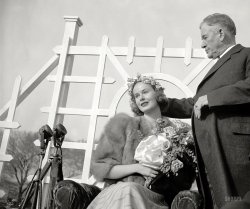
- The Egg Man: 1926
- ... supply. It took place in a trailer park just outside Baltimore which isn't that far removed from Washington, D.C., but the movie is ... Posted by Dave - 08/08/2012 - 12:46pm -
![The Egg Man: 1926 Washington, D.C., circa 1926. "Ford Motor Co., Hatcher Boaze truck." A nice view of the old market district. National Photo Co. glass negative. View full size.
No such intersection nowThere doesn't appear to be an intersection of 10th and Louisiana, N.W. in Washington any more. Was Louisiana Avenue renamed? Where was this?
[This stretch of Louisiana Avenue was obliterated during construction of the Federal Triangle complex of government buildings in the 1930s. This block would be under the current Department of Justice. More here. - Dave]
John Waters "Pink Flamingos"At the risk of sounding like a pervert, this immediately brought to mind John Water's depraved film named above from 1972, since the friendly "Mr. Eggman" was the character who delivered eggs daily to Divine's mother, Eddie, who idolized eggs and needed a constant supply. It took place in a trailer park just outside Baltimore which isn't that far removed from Washington, D.C., but the movie is definitely not for everyone. Its just that Eddie always worried constantly that one day there would be "no more eggs". It is NOT a family film. When I was a kid, we had an egg lady, a farmer's wife, who brought us the most wonderful brown eggs weekly. Thank you Mrs. Lennon, wherever you are. Them were the best ever.
Wm. H. Boaze
Washington Post, Nov 19, 1952
William H. Boaze
Funeral Rites Today
William H. Boaze, 72, a resident of the District since 1907, died Sunday at Sibley Hospital after a three-months' illness. He lived at 1335 Jefferson st. nw.
A native of Danville, Va., he operated the W.H. Boaze Company, now the B.P. Boaze Real Estate, 3408 18th st ne., for more than 10 years. ... For 20 years he owned and operated the Loudoun Produce Company on 10th st. nw.
He is survived by his wife, Mrs. Nettie Keifer Boaze of the Jefferson st. address; three sisters and two brothers.
A little yolkHmmm ... Hatcher ... eggs ... I get it.
Speaking of eggs and Maryland and all that, wasn't that great movie with Fred MacMurray and Claudette Colbert, "The Egg and I," set in Maryland? It was produced in 1948, but the actual story took place during the '20s and '30s. Very dear movie.
Draw-overOk, not exactly a colorized photo; rather a cartoonized version of that truck. Hope you like it.
Of course, no original photo was damaged in the making of this drawing.
P.F."...and they were the BEST EGGS IN TAYWN!!!"
Reminded me of something elseI thought of the Louis Armstrong song, "Butter and Egg Man"
Now she wants...a butter an egg man
A great big butter and egg man
From way down south
I am the egg-man......they are the egg-men. I am the walrus. Goo-goo-ga-joob.
Goo goo g' joobIf only the driver had a big ol' walrus mustache, it would be perfect.
Happy Birthday JohnOct. 9 is also John Lennon's birthday and as you know he is the eggman.
WORLD EGG DAY TODAYI don't mean to hog the comment board, but I just heard on the noon news that today, Oct. 9th, is "world egg day" and I immediately thought of your eggman picture. Being that you stay so current and savvy, I bet you knew this when you posted it a bit early, huh?
Great Detail!Such a great shot, two things I noticed. The owner of the truck has installed a choke wire for the carb to aid in starting the beast in the morning. Pull the choke closed and give her a spin of the crank which would send a rich charge of fuel into the intake. Run around to the cab and turn the ignition on, then back to give her another spin. If the gods were in your favor she'd fire right up!
The other thing was the size of the crate-sitter's feet. Half of him is on the ground!
(The Gallery, Cars, Trucks, Buses, D.C., Natl Photo, Stores & Markets)](https://www.shorpy.com/files/images/16071u.thumbnail.jpg)
- Coal Country: 1910
- ... lorries I recognize lorries of:
B&O (Baltimore and Ohio Railroad)
Bessemer (Bessemer and Lake Erie Railroad, ... (Cleveland, Lorain and Wheeling Railway).
Of these The Baltimore and Ohio Railroad (reporting marks B&O, BO) is the oldest ... Posted by Dave - 09/04/2017 - 10:37pm -
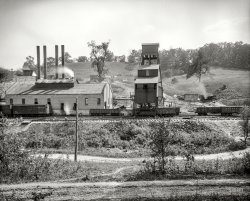
- Night Rider: 1921
- ...
Location, Location, Location Washington: 12 miles
Baltimore: 31 miles
For some reason, that struck me as particularly ... Posted by Dave - 09/04/2012 - 4:54pm -
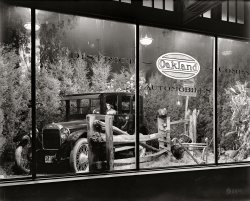
- Club Firetrap: 1941
- ... free cigarettes, either. I don't recall seeing them in Baltimore, but the officers' club at Fort Meade had them too.
Oddly, my ... Posted by Dave - 09/20/2017 - 10:27am -
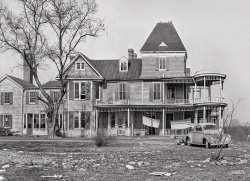
- Man of Letter: 1904
- ... the photo is ... Harry Dorsey Watts (b. 28 Apr 1885 in Baltimore; d. 27 Jul 1952, East Hampton, N.Y.) This is his Class of 1904 photo ... His age was 67.
Born in Baltimore, the son of John H. C. and Mary Dorsey Mitchell Watts, he was a ... Posted by Dave - 01/23/2020 - 9:31am -
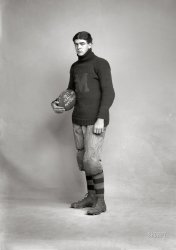
- Ghost Town: 1913
- ... man's Steinway Stieff pianos were manufactured in Baltimore from 1842 until 1951. They were commonly sold by Steinway dealers as ... and made the Preakness cup until the company closed its Baltimore facility in 1999.
Moving Pianos Stieff Piano moved to the next ... Posted by Dave - 09/04/2012 - 9:38pm -
![Ghost Town: 1913 Washington, D.C., circa 1913. "The Mode -- Hatters and Haberdashers, 11th and F." National Photo Company Collection glass negative. View full size.
Coca-On the left, barely in the picture, is a partially visible wall with a list of products painted on it. Obviously a drug store of some size. The Coca Cola company, in their advertising wisdom, commands the top and bottom of the signage. They probably paid for the entire sign and both the druggist and the Coca-Cola bottler got his money's worth.
Stieff competitionRight around the corner is Kimballs' pianos. Easy comparison shopping for the best deal
GhostsHow long was the exposure that so many of the people only appear as ghosts?
[Three paces. - Dave]
The Player Piano building is still there!You can see the building from which Culley & Sons sold Kimball pianos and organs is still there among the taller DC office buildings.
[The innards are gone but they left the facade. A nice touch in my opinion. - Dave]
View Larger Map
Many ghosts but no Spooky GuyWhere is the obligatory spooky person in a window? I thought that was a law or something.
Poor man's SteinwayStieff pianos were manufactured in Baltimore from 1842 until 1951. They were commonly sold by Steinway dealers as a durable, high-quality affordable alternative. I owned a Stieff upright for many years.
The Stieff family also produced Stieff silver, and made the Preakness cup until the company closed its Baltimore facility in 1999.
Moving PianosStieff Piano moved to the next block in 1917, making room for the United Cafeteria, seen in this Shorpy photo.
+96Below is the identical view from September of 2009.
A minor correction...The Stieff family that made STIEFF PIANOS were cousins of the "Silver Stieff's" The Preakness cup is called the WOODLAWN VASE. While Kirk Stieff closed in 1999, the Woodlawn Vase is still provided to the Preakness today.. thru James Stieff.
Photos of The Stieff Company, the Woodlawn Vase and silver being made are available at THESTIEFFCOMPANY.COM, a free site.
(The Gallery, D.C., Natl Photo, Stores & Markets)](https://www.shorpy.com/files/images/30760u1.thumbnail.jpg)
- Pennsylvania 5401
- ... that time to integrate cab signals with ATC. Harrisburg to Baltimore was equipped for ATC and cab signalling by 1927, and it was extended ... Posted by Dave - 04/04/2013 - 3:30am -
![Pennsylvania 5401 July 14, 1929. "New Boston train, 'The Senator,' at Washington's Union Station, departing at 12:30 p.m. The train is to arrive in Boston at 10 p.m., cutting 3½ hours off the time made by the other two Pennsylvania line trains there, the Federal and Colonial expresses." Harris & Ewing glass negative. View full size.
1927 K-4?What a great pic! Is this one of those 1927 K-4's? Help us out PRR friends! Thanks for posting!
Train Christening
Washington Post, July 14, 1929.
New Boston Train to Be Christened
Ten-year-old Ellen Page Eaton will break a bottle of Potomac River water on the locomotive of a new Pennsylvania Railroad train this morning at 11 o'clock in the Union Station and christen it “The Senator.” The train will give the fastest service between Washington and Boston.
After christening, the train will be open to inspection until its time of departure, 12:30 p.m. The train is scheduled to arrive in Boston at 10 p.m., cutting 3½ hours off the time previously made by the other two Pennsylvania line trains to Boston, The Federal and the Colonial expresses.
“The Senator” will be an all-Pullman train with dining, observation and club cars. It will make stops at New York City, New Haven and Providence.
Little Miss Eaton, who will christen the train, is the daughter of John Eaton, crack engineer of the railroad, who is veteran of 28 years. …
Even Faster NowOn Amtrak's Acela Express the trip can be made in 6 hours and 40 minutes.
What's ItOK, what the thingie hanging from the train: an anchor line?
[My guess: part of the bottle-breaking ritual mentioned in Washington Post story. - tterrace]
[It's the bottle holder. - Dave]
Little Miss Eaton...must be the one in the white frilly dress.
PRR 5401A really great photo, notice the PRR emblem on the steam valve cover above the piston.
Lock box?What is the locked box on the front of the engine for?
It's a K-4built in 1927, 92 were built, Baldwin built all locomotives from 5400 to 5474, all other K-4s were built by PRR in the Juanita Juniata shops.
K-4 or K-4s?The "s" suffix in the PRR steam locomotive classification scheme denotes the presence of a superheater. PRR supposedly stopped using the "s" suffix in 1923, as by this time, the superheater was a standard design element. Nonetheless, you commonly see these locomotives referred to as K-4s. The 5401 was indeed built in 1927. Here she is a few years later looking a bit grimier:
Fresh Out of the BoxHere are an engineer and fireman whose garments will never again appear so pristine. In the glorious days of steam, anything forward of the baggage car was filthy work indeed, and even the most assiduous washing resulted merely in progressively more faded coveralls, with coal, smoke, and cinder stains intact.
Re: Lock Box and the K-4Guessing the lock box on the pilot beam contains tools and parts for quick maintenance on the road, stuff like extra lenses for the marker lamps, air and steam heat hose connections, etc, as well as the green and white flags mounted high on the locomotive which would indicate the train is running as a second section or an extra movement. At first I thought it might hold red (emergency stop) flags, fusees, and explosive "torpedoes", which are clipped to a rail and go bang when something runs over them, signaling the engineer for an emergency stop. These items, being needed by the crew quickly in an emergency, would be kept in the cab, as they still are today.
K-4 Pacifics would run on the Pennsy until 1957, but by 1935 the rails between DC and New York were electrified with overhead wires, and steam became a rarity on the line now known as the Northeast Corridor.
Automatic Train ControlThe locked box on the pilot beam is an instrument case for the Union Switch & Signal automatic train control equipment.
Train control?PRR Washington to New York had cab signals in the 1930s. The line has some form of train control now, but probably not in 1929.
Looks like PRR began installing train control (that is, automatic brake application if the engineer ignores a restrictive signal) in 1951. (Railway Age, 12 March 1951 p93 -- it's online at hathitrust.org.)
Cab Signals and Automatic Train ContolThe ICC mandated the introduction of ATC in 1922. PRR's first installation was in 1923 and they made the decision at that time to integrate cab signals with ATC. Harrisburg to Baltimore was equipped for ATC and cab signalling by 1927, and it was extended to Washington not long afterwards.
(The Gallery, D.C., Harris + Ewing, Railroads)](https://www.shorpy.com/files/images/SHORPY_35483a.thumbnail.jpg)
- Poe House: 1930
- ... a lot, so it's not surprising that there are Poe houses in Baltimore, Philadelphia, and New York. (The last is only a facade on a NYU Law ... Posted by Dave - 08/30/2012 - 11:06am -
![Poe House: 1930 Richmond, Virginia, circa 1930. "Edgar Allan Poe's mother's house." 8x10 inch acetate negative by Frances Benjamin Johnston. View full size.
In the immortal words of Bette Davis"What a dump!"
This explains a lotNo wonder Edgar was so dark and haunting in his writings.
Ghost of Poe?Look at the base of the water pump right of center. Interesting!
It's No WonderComes as no surprise to me that Poe had Ravens at his chamber door. No mortals were tall enough.
Let us not forget ...this photo was his grandmother's home, NOT his,
[Erm, this is NOT his grandma's house. - Dave]
and he was born in 1809, so by 1930 this grandmother's home may have been neglected for 121 years before [???] his birth. Look around you, even just at your own grandmother's home today and see if the place hasn't fallen into disrepair and decay and see if creeping slums have enveloped the area as in the case of my grandmother's dwelling. Many once-elegant and genteel neighborhoods, even from the 1940's have turned into wastelands, especially those next to run-down urban areas as in Detroit, Philly, Hartford and New Haven, Ct. Not all real estate escalates in value. Also, this is a back alley, not a front entrance, which is usually more attractive. Poe himself may have never imagined such a dump for his grandma.
Here a Poe house, there a Poe housePoe moved around a lot, so it's not surprising that there are Poe houses in Baltimore, Philadelphia, and New York. (The last is only a facade on a NYU Law School building). Boston had an Edgar Allan Poe Square and a house, but both vanished sometime after 1930. Richmond has a Poe Museum which advertises being "only blocks away from Poe's first Richmond home." Perhaps that's what Johnston photographed. It's gone too, as is the house of his foster family the Allans.
Quoth CartmanMr. Garrison, why do Poe people smell like sour milk?
More important questionAs most of us Shorpy viewers question, previous commentrs non withstanding,
Does this structure still stand?
I think more important than not, most Shorpy viewers look at this site to see the past, and almsot immediately we look to see if the structure still stands, and if any photography of current state exists.
Poe Neglected StuccoI got to wondering what the back of this house might have looked like before the old whitewashed stucco crumbled away, and before the second floor chamber window got replaced by a door and landing, later removed. Here's a quick Photoshopped stab at it, but the door and windows could still use some new paint and putty, and that kitchen yard is a disgrace.
(The Gallery, F.B. Johnston, Richmond)](https://www.shorpy.com/files/images/06887a.thumbnail.jpg)
- Wagons Ho: 1901
- ... 1901. "View of S.W. Block 386, probably D Street side of Baltimore & Potomac Railroad freight station at Maryland & D, 9th & ... Posted by Dave - 04/26/2022 - 3:46pm -
![Wagons Ho: 1901 Washington, D.C., circa 1901. "View of S.W. Block 386, probably D Street side of Baltimore & Potomac Railroad freight station at Maryland & D, 9th & 10th Streets, showing man loading freight into delivery wagon." 5x7 glass negative, D.C. Street Survey Collection. View full size.
What's in the wrappers?Are those Gatling Guns wrapped up? Sure looks like it!
(See the unwrapped version here: https://www.spanamwar.com/Gatling)
That’s some freight stationYour one-stop-shop for machine guns and whiskey!
A plug for ShorpyI was curious about Wilson Whiskey and found this ---
https://emmettwilsonbook.com/2015/08/27/his-brand/
Back to the FutureThe bike on the porch looks out of place in a 1901 setting. It would fit into any current-day setting, white sidewalls and all.
[The entire tire is white, not just the sidewall. Before manufacturers began adding carbon black around 1910, tires were the white color of natural rubber. - Dave]
(The Gallery, Bicycles, D.C., D.C. Street Survey, Horses, Kids, Railroads)](https://www.shorpy.com/files/images/SHORPY-40365a1.thumbnail.jpg)
- Cool Quartet: 1961
- ... fad, a Flat Top with Wings.
Flat Top with Wings In Baltimore we called that style haircut a Detroit. Never heard it called a Flat ... Posted by Deborah - 02/01/2013 - 3:53pm -
![Cool Quartet: 1961 My sister-in-law, left, previously seen here with her Chevrolet Bel Air, in 1961 with her brother and friends in the foothills of the San Fernando Valley in Southern California. 35mm Kodachrome slide. View full size.
This was taken at the William Hart Ranch, now the William S. Hart Park and Museum, in Newhall, CA –- Deborah
The 60 Chevyand early 50s Rambler wagons are an easy ID. What’s that between them? The left tail light assembly seems to resemble a 52/53 Merc.
Camera girl's friendThe dude sitting on the rail is sporting the late 50s tonsorial fad, a Flat Top with Wings.
Flat Top with WingsIn Baltimore we called that style haircut a Detroit. Never heard it called a Flat Top with Wings. But I must admit that description is much more appropriate.
FashionsThe ladies fashions are definitely in line with the times, but the interesting thing is that, to me, if you looked at the guys, they could be clean cut young men of today.
In eight years from 1961, they will look anacronistic, but the tide has swung back.
"Progress"This is just a guess - but I imagine that bucolic scene stretching from the parking lot all the way to the foothills in the distance is today an endless expanse of asphalt.
Griffith ParkIs what it looks like to me.
Camera girlShe's holding what looks like an Ansco Shur Shot.
William S. HartI drive past the Hart mansion several times a week. Though there has been development in the area since the photo was taken, the scene, as shot, hasn't really changed a great deal. Downtown Newhall looks much as it did 50 years ago. Drive a few miles to Valencia and the story is much different. Houses packed together on small lots, multiple Starbucks and all of the amenities of the SoCal lifestyle
Four TopsThrow a few musical instruments into the mix an it would look like an album cover.
Flat Top with WingsIn western New York, it was derisively known as a D.A. (for a duck's posterior)...
Cool Quartet location nailedAs Deborah notes in her caption update, the shot was taken at the William S. Hart Ranch, the retirement home of the legendary silent-film cowboy star.
[That explains the backward "WH" on the arch below. - Dave]
In 1960 San Diego-Those haircuts were called Flattops With Fenders and they defied gravity. In retrospect, they look so innocent, neat and tidy after recalling the long stringy hairstyles that followed during the 1970s.
William S. HartThis must be my week for William S. Hart, had a couple references to him on Facebook the last couple of days. Anyhow, William S. Hart was THE GREATEST of all western stars EVER. He started out as a very successful Broadway actor, and was known for his Shakespearean roles. But at the age of 49 (1914), he got into movies. He tried very hard to make his western films represent to true west that he had known in his youth in the 1870s and 80s. Great, great silent film actor. He was pretty passe by the late 20s, but his stature is assured in the movie pantheon. He did very well financially, and left his ranch as a museum and tourist destination.
(ShorpyBlog, Member Gallery)](https://www.shorpy.com/files/images/TaketheScenicway_0.thumbnail.jpg)
- House of Fleas: 1940
- ... town along U.S. Highway No. 1, between Washington and Baltimore." Jessup, Maryland, was the corporate headquarters of flea-powder ... at Fort Meade and lived, successively, in Laurel, Baltimore, and on the post itself. Driving with my parents from Laurel or Meade to Baltimore for an occasional dinner or the theater, passing this sign was a high ... Posted by Dave - 01/22/2019 - 3:08pm -
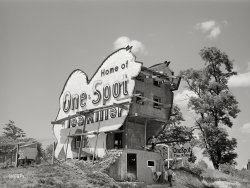
- Prairie Schooner: 1915
- ... Highlandtown, Maryland seems to be a neighborhood inside Baltimore.
I can't find anything on Frank A. Blum.
"Ask the driver for ... Posted by Dave - 08/27/2012 - 2:41pm -
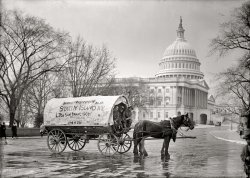
- Plymouth Breaker: 1901
- ... Transport, and CRRNJ 4-4-2W at B&O Railroad Museum in Baltimore.
"American" camelback Shilo would seem to be ... preserved locomotives are lacking in nature, with Baltimore & Ohio Railroad 4-6-0 No. 173 suffering from a cracked boiler ... Posted by Dave - 08/08/2012 - 2:30pm -
![Plymouth Breaker: 1901 Plymouth, Pennsylvania, circa 1901: "Plymouth coal breaker." 8x10 inch dry plate glass negative, Detroit Publishing Company. View full size.
Mechanical DevicesThey may be taking over in the operation of the breaker, but somebody is going to have to do some serious shoveling to unload those boxcars! And it looks as if this is an accepted method as there are several flat cars full of ready cut boards waiting at close hand. I can't imagine what the purpose of the gondola/flat car combo can be for. There seems to be another set in the loading shed and one farther down the other side. Very perplexing!
Perhaps they are processing so fast that they need to use every available car until they can acquire or manufacture new gondolas?
The Parrish BreakerThis photo appears on Wikipedia under "Plymouth, Pennsylvania" and is identified as the second Parrish Breaker.
Here, as everywhere else
Popular Mechanics, 1908
Largest Coal Breaker in the World
The huge coal breaker at Plymouth, Pa., known as "Nottingham No. 15," is the largest in the world. Its capacity is 1,000 cars of a size large enough to carry an equivalent of 7 tons of finished coal each. Not more than 200 ft. from the breaker is a shaft 350 ft. deep from which one of these cars arrives with coal from the mines every 20 seconds.
Here, as everywhere else, mechanical devices are superseding manual labor. In the old-style breaker at least 150 men and boy pickers were employed, but in this breaker a spiral coal-picking machine has made it possible to dispense with at least half of that number. The breaker cost $200,000.
[Note: the breaker pictured above may not be the one described in the Popular Mechanics article. Nor does it appear to match any of the other PA anthracite breakers cataloged at this site.]
Plymouth commentsThe boxcars are likely outbound. Some anthracite customers ordered coal in boxcars, as there was less pilferage. (Note there is another boxcar under the breaker).
Looking at the hi-def image, a locomotive is seen in the distance that appears to be an inspection engine. It has a high cab with the bell mounted on the front end sill. There probably are several business cars behind it; difficult to see at this distance.
An inspection engine indicates a visit from the "brass." The grounds were spruced up ahead of time for sure.
Camelback LocomotiveThe type of locomotive in the back isn't an "inspection" locomotive as another poster called it, but is instead a camelback. This type of locomotive was somewhat common in the early 20th century, but fell out of favor due to people fearing they weren't safe. They still hung around in places like yards and industrial applications; but generally speaking they died out. Only one has been preserved in working condition.
Inspection LocomotiveThe high cab roof, along with the bell mounted on the front deck, says inspection locomotive, an entirely different animal compared to a camelback.
The oversize cab was necessary to accommodate the officials who were doing the inspecting of railroad facilities. The inspection engine could run alone while on business, but often hauled private or business cars, as appears the case here.
BTW, at least two camelbacks have been preserved: DL&W No. 952 4-4-0W at St. Louis Museum of Transport, and CRRNJ 4-4-2W at B&O Railroad Museum in Baltimore.
"American" camelbackShilo would seem to be correct. The construction of the engine more resembles an early "American" type camelback. Not American 4-4-0, but instead this type of locomotive.
The PRR owned six of this class of locomotive, with the B&O having 50. Only one has been preserved of this class, though it is not in running condition. Due to its construction, it is not unexpected for them to be mistaken for inspection trains, which were a very different beast entirely.
This type of locomotive was rendered obsolete by 1910, due to improvements in boiler design. By then, most had been withdrawn from service or rebuilt into "conventional" cabbed locomotives.
Also, only one "modern" Camelback, Reading Company 0-4-0 No. 1187, survives in operable condition. The remaining preserved locomotives are lacking in nature, with Baltimore & Ohio Railroad 4-6-0 No. 173 suffering from a cracked boiler crown sheet and failed boiler certificate, and Central Railroad of New Jersey 4-4-2 No. 592, having been severely damaged when the roof of the museum gave way under heavy load in 2001-2002. Lastly, Delaware, Lackawanna & Western 4-4-0 No. 952, is in no condition to operate, missing may integral parts, and B&O Camelback 2-8-0 #173 (Of this class in the photo) Being too old to consider repair and operation.
BoxcarsCoal shipped in boxcars, rather than hopper cars, was shipped in fifty pound burlap bags. Usually sold in the larger cities to customers who preferred to buy it that way as it could be picked up at any coal yard or even a hardware store.
(The Gallery, DPC, Mining, Railroads)](https://www.shorpy.com/files/images/4a07311a.thumbnail.jpg)
- Park Transfer: 1925
- ... marked rail cars, from left to right, hail from the Baltimore & Ohio (B&O), Nickel Plate (N.K.P.) and Louisville & ... Posted by Dave - 09/09/2013 - 5:06pm -
![Park Transfer: 1925 Washington, D.C., 1925. Something for the railfans, something for the truckfans. "O.D. Boyle" is all it says here. National Photo glass negative. View full size.
ToadsCarmen, inspectors who walked incoming trains before they were switched out (called "Toads" in railroad slang) carried a 1" diameter stick of chalk on their walks. If they found anything that needed minor attention (such as a loose bolt or cotter pin, brake shoes needing replacement, or worn air hose) they would chalk a symbol on the corner of the car to tell other repairmen. These symbols were not universal, and varied from yard to yard.
If they found a major defect (such as a brake defect, safety violation, or worn bearings) they stapled a postcard size card onto the side of the car, reading "Bad Order" and what the defect was. When the switchman broke up the train a Bad Order tag superceded any other instructions for the cars routing and it was placed in the "Rip", or repair yard.
Timeless boxcarsSome things change, some don't. Cars and trucks have changed tremendously in 88 years but a 1925 boxcar looks very much like a 2013 boxcar.
GMCThat's a GMC truck, probably about 1915. First GMCs were built in 1912. Already pretty old at the time of the picture.
As I See ItVisible marked rail cars, from left to right, hail from the Baltimore & Ohio (B&O), Nickel Plate (N.K.P.) and Louisville & Nashville (L&N), respectively. As for the truck, I'm thinking it's post-equine drayage. (Wikipedia helps here: http://en.wikipedia.org/wiki/Drayage.)
Team TrackThis would be a Team Track, where rail customers without spurs to them could receive goods. A series of parallel tracks, separated by a roadway where a team of horses with a wagon, and later motor trucks, could pull up alongside the railcars and transload goods from, or destined to, local customers.
As I (also) See ItThe reporting mark on that middle car (N.K.P) is more accurately defined as: NKP - NEW YORK, CHICAGO & ST. LOUIS RR (NICKEL PLATE ROAD) now, of course, the NORFOLK SOUTHERN RWY. CO.[*]. The name's origin is interesting as told here: Origin of the Name Nickel Plate Road.
Centrifugal Dirt CollectorThe things you learn at Shorpy. A few Googles and I was at pp. 88-89 of the December 1909 issue of "Air Brake Magazine". The subject collector is placed in the air line upstream of the triple valve. The shape of the chamber swirls the dirt around until gravity takes it to the bottom, where it stays.
This is the "B" endTo report mechanical issues, or describe anything concerning a railroad car, you need to be able to differentiate one end from the other. The "B" end of any car is the end where the hand brake is located. The opposite end is the "A" end. This practice is still followed today.
Boxcars then & nowThere is a world of difference between boxcars of a century ago and those of today, although these do look more modern than the solid-tired GMC truck. These boxcars have corrugated steel endwalls, but the sides of the one to the right are all wood. So you can imagine the steel-rod-and-turnbuckle structure on the bottom, the kind hobos are seen riding in the cartoons, and which needed constant adjustment. The knuckle couplers on these boxcars do not have the horizontal slot intended to receive a link during the transition from link-and-pin couplers of two decades earlier. It remains for better railfans than myself to say how quickly these were upgraded to solid knuckles.
Modern boxcars do not have a roofwalk, and the ladders do not reach the roof. Besides the work-related injuries of having brakemen climb up on the roof, there was the ever-present liability of unauthorized persons getting up there.
Since the '60s, boxcars, and all revenue rolling stock, have been getting larger. They have steadily been lengthened, and bridges have been raised to accommodate increased height.
Finally, journal boxes have given way to Timken roller bearings. I suspect the word "journal" refers to the fact that these bearings once required daily attention. The top-hinged doors on the boxes would seem to attest to this. A major reason cabooses (or cabeese) had cupolas on top was so the crew could watch out for overheating bearings.
My dad says that solid bricks of lubricant were available to dump into a problem journal box, as a stop-gap until the train could be brought into the yard. A large portion of his career at Texaco involved the development of an ideal lubricant for roller bearings, which since the '70s have completely replaced journal boxes.
Chalk MarkLower right side of closest car, just above the "pole socket": anyone know what it means?
O.D. BoyleO.D. Boyle was a yard brakeman for the B&O, working in Washington DC, in 1918. The connection to this photo is beyond me, though. See Page 22 here.
Pole SocketsPole sockets were the receptacles for push poles. Sometimes it was necessary (or at least convenient) for various reasons to move a car on an adjacent track that you could not couple your engine to. To accomplish that you used a push pole held in place by a crew member. The inherent danger of such a maneuver caused the practice to be outlawed relatively early on Class I railroads, but on backwoods short lines where operations were not so constricted by rules, it continued much later. And, railroads being railroads, no one really wanted to go to the trouble of changing any blueprints, and pole sockets continued to appear on equipment long after no current employee could remember seeing them used. Here's a photo of a push pole mounted under the tender of a Mississippi Central steam engine, probably from the 1930s.
Polin' the carsmichaeljy says the practice of poling cars was abandoned relatively early by Class I roads, but maybe not so ... in Winston Link's masterful history "The Last Steam Railroad in America," he includes two pictures (pages 100 and 101) of a brakeman poling a gondola on the Abingdon division of the Norfolk & Western some time between 1955 and 1957, when the division was dieselized completely.
Locomotives continued to be made with pole sockets right up until the end of steam.
(The Gallery, Cars, Trucks, Buses, D.C., Natl Photo, Railroads)](https://www.shorpy.com/files/images/SHORPY_32179u.thumbnail.jpg)
- The Accident: 1936
- ... on the Ohio River, in 1818. It was extended east to Baltimore, a major seaport, by 1824.
The road was a marvel in the early - ... Posted by Dave - 07/31/2012 - 6:46am -
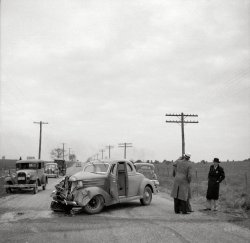
- Pleasant and Main: 1907
- ... plays of the time did, in Boonton, NJ. It had stops in Baltimore, Newark, New York, and a few towns in New England. It must have gone ... Posted by Dave - 11/28/2013 - 9:15am -
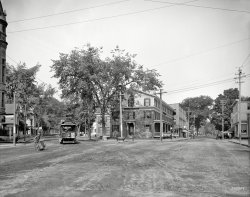
- Hawkeye Troop: 1956
- ... full size.
Balmer Boys Overlea is part of Greater Baltimore. Today's Maryland Troop 433 is now located in Olney which is west of ... Posted by Dave - 09/08/2012 - 6:29pm -
![Hawkeye Troop: 1956 "Boy Scouts 1956." Our young friend Kermy is holding the flag on the right in this Kodachrome slide found on eBay. View full size.
Balmer BoysOverlea is part of Greater Baltimore. Today's Maryland Troop 433 is now located in Olney which is west of the city.
http://www.troop433.org/
Jungle GreensFor some reason the poses in this shot, particularly of the lads squatting at the front, remind me of photos of young soldiers in Vietnam or Korea.
I guess a few years into the future from here, these lads may well have been those soldiers.
Uniformed and proud.A time when the BS wore full uniforms and looked the part. I remember having to wear the official shorts, socks, shirts, berets etc. We were proud to do that as well and were always dong some volunteer task the town asked us for. We had a huge Scout troop in my hometown 40-60 at one time. I recently went back for the 4th of July parade in the hometown and was dismayed at the look the local Scouts took on. 7-10 members now shuffling down the street: shirts un-tucked, baggy cargo shorts, flip flops; barely any trace they were indeed BS. Total slobs. Oh well.
Kermy's from Maryland!I would have guessed Iowa, glad to hear it.
Mounting evidenceSomething tells me the evidence will start building sufficiently from these photos to track down Kermy and his sister.
I wore that uniformMinus the convenient folding brimless hat, whatever you call it. I know the hat is military in origin, but I also associate it with fast food clerks. When we wore hats at all, they were ball caps.
I was one of the last Scouts to wear this style uniform. The new uniforms, with the lighter-color shirts and epaulets, were introduced about 1981. I wanted to be up to date, but my parents had just bought my uniform and were determined to wait until I outgrew it, which I did soon enough.
The Scout troops that beat everybody else in the knot-tying competitions must have worn their uniforms all the time. That wasn't us. It was only much later that I understood that they were busy perfecting these skills, while we were backpacking 100 miles, and climbing Mount Whitney. I think we had more fun.
1950 censusI wish we had access to the 1950 census, so we could look for a family in Overlea, Maryland, with a little boy named Kermit (at least I can't think of any other name that Kermy would be short for).
azhdragon is right. These kids would have been in the age group of most who served in Vietnam. Its a very sobering thought.
Scout seniorityWhen I was in Boy Scouts in the early 80s, we had the recently-introduced khaki shirt with dark OD green trousers and a mesh back baseball cap [OD green with the BSA emblem in center]. However, some of the older Scouts and a few of the adult leaders still had the old style, all-OD green uniform as shown in this photo. Sort of an indication that they were "old-timers" and still wore the older uniform to prove it. It definitely looked a lot sharper than the ones we had and was also more comfortable.
This could have beena picture of my troop in the early 60's. The garrison cap worn by these Scouts was still the official "topper" for scouts of my era.
Not that Troop 433Troop 433 of the Balto. Council still meets at a Methodist church in Perryville.
I've been trying to identify the campsite but it's not obviously either of the two local boy scout camps (Broad Creek or Hawk Mountain) or in Patapsco Park on the other side of the city.
The poseI noticed their poses as well. I think they were very consciously (without realizing it, if that makes any sense) mimicking the poses they saw their fathers taking in the unit pics from WW II.
I was a Cub Scout in 56, but graduated to the green uniforms in 1958. That hat style was what we called a garrison cap in the Marine Corps, but it had a slightly ruder common name, the p*ss cutter.
BSAMost of these kids are probably about 2 years older than me. I was a Cub Scout in Kansas from 1956 to 59, and a Boy Scout from 1959 to 1964. We all wore the long-sleeved shirt, which for reasons I never understood required you to fold the collar inside the shirt before putting on the neckerchief. When I was 14 I went on an expedition to Philmont Scout Ranch in New Mexico. The troop I went with all wore the short-sleeved shirt (which had no collar), short pants, and a campaign hat (which was an optional item.) After that, I never went back to the long-sleeved shirt, even in winter.
(Boy Scouts, Kermy Kodachromes)](https://www.shorpy.com/files/images/SHORPY_Scan-120821-0003.thumbnail.jpg)
- The Club: 1916
- ... on hydrants standardized as a result of a major Baltimore fire? Fire departments from outside Baltimore discovered that they couldn't connect their hoses to city hydrants. ... Posted by Dave - 09/14/2014 - 12:25pm -
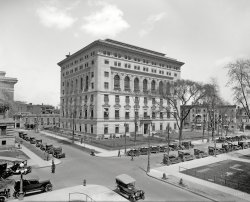
- Candy Girls: 1922
- ... Street — Opposite Palace Theater.
Branches: Baltimore, Richmond, Dayton, Fairmont, Morgantown, Wheeling.
... Posted by Dave - 09/13/2011 - 9:49pm -
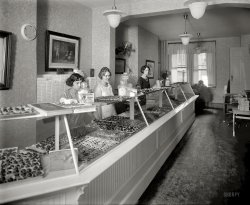
- Group Shot: 1925
- ... View full size.
Hot On July 9, 1925, the high in Baltimore was 94 degrees with a low of 72. In Washington the high was 92 and ... Posted by Dave - 12/20/2008 - 9:39pm -
![Group Shot: 1925 July 9, 1925. "Boy Scouts, Camp Roosevelt." National Photo Co. View full size.
HotOn July 9, 1925, the high in Baltimore was 94 degrees with a low of 72. In Washington the high was 92 and the low 73. If scout uniforms had any wool in them, there are some unhappy campers in this shot.
Mystery AnimalI'm trying to figure out what the shorter boy, second row, center right, is cradling in his arm. The boy beside him appears to be trying to pet it. Dog or cat presumably, but these are boys in the woods — who know what they'd find?
[Woof. - Dave]
LopsidedIs that building as lopsided as it looks in this photo?
It doesn't even look safe to be in.
[Isn't it funny how the trees are also tilted. What a mystery! - Dave]
Hey I know those guys...Except for the occasional sailor cap, Those guys look almost exactly like the kids I went to Scout camp with 50 years later. We didn't have such a nifty radio shack though. Then again our scoutmasters and camp counselors didn't wear bow ties either!
Level with meI hope the troop leaders haven't passed out the carpentry merit badges yet.
They're all alike!Aside from age, they're mostly scowling, tow-headed, sunburned, and bug-bitten. Not a set of rabbit ears or an "ethnic" face in the lot.
Camp RooseveltCamp Roosevelt was about 8 miles south of Chesapeake Beach. In the late 1970s the D.C. area Scout Council needed money, and sold Camp Roosevelt to real estate developers. The name was preserved, but it is now a very posh subdivision of large homes, many with views of Chesapeake Bay.
Ahhhhh! MemoriesI live not too far from there. And yes, it is now overpriced McMansions on the Bay. Reminds me of my Boy Scout days. No AC, plenty of bugs, and lopsided hutches.
Good ol' Camp RooseveltI attended Camp Roosevelt over two summers in the early '50s. I remember that hall. Mixed up and drank lots of "bug juice." Our campsite was at the top of a cliff, and we rode out a hurricane that came up the Bay (Hazel, I think).
(The Gallery, Boy Scouts, Kids, Natl Photo)](https://www.shorpy.com/files/images/27184u1.thumbnail.jpg)
- Publix: 1963
- ... yard near near W 29th Street in the Remington section of Baltimore.
Oddly enough because of the many immigrants who kept goats in that ... Posted by Dave - 09/01/2016 - 6:49pm -
![Publix: 1963 1963. "George Jenkins, founder of the Publix supermarket chain, at store in Lakeland, Florida." 35mm negative by Marvin Newman for the Look magazine assignment "George Pleasures Them With Groceries." View full size.
Baby food/PublixThey are really stocked up on baby food!
I shop at Publix's stores around Nashville, TN.Yes, it is a pleasure to shop at their stores.
Been around the world...And you still won't find better grocery stores. Although, Vons in California is pretty close.
I served in the military and have been stationed across the US. I grew up in central Texas, Piggly Wiggly and Safeway were the stores I remember as a child.
Despite the problems of the North, Meijer was one of the best but none rival Publix.
Jammed up and jelly tight!Stunning photo. So many things to see and remember. The comment title was what a "stockman" would be told to do on his aisle; keep those shelves stocked! Look at the number of facings Maxwell House coffee has. Also,"eye level is buy level" on those shelves.
The stockman with Mr. George is using an old green "float" to bring his stock to the shelves (we in produce used chrome two-level ones), and is using a Garvey flip-stamp pricer. It used a purple ink that could be wiped off the can tops with ammonia if the price changed on a Thursday morning. Both stockmen have feather dusters in their back pockets and, in those days, would be wearing a white shirt and black tie.
Being involved making displays, I remember that corrugated brick-paper, the fluffy pastel paper streamers, the fancy paper hanging eye-catchers that folded out to make different shapes. In produce, we used miles of fake grass made of paper (I think it was) on our displays, and that stuff wouldn't bruise the fruit.
Seeing the bottled salad dressings reminds me of an initiation trick every "bagboy" would have played on him in his early days: Being told to stay busy on the salad dressing/pickle aisle by keeping the oil-and-vineger dressings shaken up and unseparated.
Mr. George hated to see empty Coke bottles on his shelves, and would sometimes put a silver dollar under ones he'd see when visiting a store. Lucky stockmen who remembered to put those Coke bottles in the basket of his float would be happy to discover those!
Drink your OvaltineI would love to have some of that 1963 Ovaltine, the kind that left a layer of crunchy, Chocolaty debris floating on top.
Pretty grainyPretty grainy, and not talking about the cereal. Not up to Shorpy's usual standards.
[That's because it's a relatively tiny 35mm negative, and high-speed film to boot, not a gigantic 8x10 inch glass plate such as used by the Detroit Publishing Company, for example. -tterrace]
Power AisleI worked in the admin side of a large retailer for nearly a dozen years and would always hear the merchants on the operational side of the business talking about the "power aisle", the open area down the middle of the retail floor where displays and promos were placed. Here, it looks as though Publix used that space to sell breakfast cereal, which seems stacked out and perhaps not on shelves - an interesting way to display it.
Interesting to see the predecessor to plastic wrap, Scott's Cut-Rite wax paper, in such quantity. My mom used to wrap my lunchbox sandwiches in that stuff. Also, a bunch of choices of malted milk products, with Ovaltine, my favorite Carnation brand, and one other brand I cannot identify. It seems that is no longer very popular as it was back then, but I loved it as a kid.
The forgotten daysBack when you could see across the top of shelves into the next aisle.
I'm floored!Sorry to go on and on, but please notice the terrazzo floor in this photo. They were always seen in the Publixes of my day--green and white were the colors--and it was a point of pride to have them gleaming clean and polished at all times. For those unfamiliar with terrazzo, it was made of marble chips set in concrete and it took a high shine when sealed correctly before waxing.
Other Publix things were auto-opening doors and a big free Toledo scale just inside them.
Also, please note the window sign on the far right: S&H Green Stamps were given at Publix for years, and I still have a drill I "bought" with those stamps in about 1970.
With his super-clean, air-conditioned, and well-lit stores, Mr. George certainly did his best to make shopping a pleasure.
EDIT: The reason we used the term "Mr. George" was that George's brother, Charles, was also a visitor to our stores. So it was Mr. George and Mr. Charlie. Mr. Charlie was, in my experiences with him, a bit more outgoing than his brother. Once, when he was visiting Publix #51 in Tampa, he caught me and two of my produce workers in a bit of horseplay that was absolutely over the top. I won't describe it, but he had every right to fire us all on the spot.
Instead, he burst out laughing and said, "Boys, if you can't have fun at work you're in the wrong job." Then, shaking his head at our insane antics, he walked away.
Popular PublixDespite any problems the South may have, at least we have Publix Supermarkets, "Where Shopping is a Pleasure". It's everybody's favorite store.
Now, if only they'd just starting giving out those S&H Green Stamps again!
Boy does this bring back memoriesI remember my mother taking me to Publix every Friday to grocery shop at the Publix in College Park, a section of Orlando. Before we would leave, I would always take a turn on the big Toledo scale just inside the door and I spent many happy hours gluing all of our Green Stamps into a book so we could save up for some sort of item in the Green Stamps catalog. I can still remember the minty taste of that horrib glue. I'm no longer a "Floridiot" now living in Asheville, NC for the past 30 years, but about two years ago, we got our first Publix p here uand the town went absolutely mad for it. You couldn't even get a parking space the first three months it was open. Certainly a testament to what a great store it was and continues to be.
Goat Milk VS Cow Milk ... A Childhood Tale Of WoeGoat milk and Pet milk both played a part in my life.
Back in the early 1900s my grandmother raised her brood of 6 children on goat's milk taken from the family goat kept in their yard near near W 29th Street in the Remington section of Baltimore.
Oddly enough because of the many immigrants who kept goats in that area it was known as Goat Hill.
My father's version of walking to and from school uphill both ways was his story of having to milk a goat before he could have breakfast and it tasted terrible compared to the cow's milk I could get out of the ice box. Refrigerator was never in his vocabulary.
My hard luck story usually took place on Wednesday (the day before dad's payday) when we would be out of the regular Sealtest milk for my morning Wheaties and I would have to mix the condensed Pet milk (used in coffee mainly) with tap water. It was an acquired taste and by age 10 or so I got to like it but I always told Dad it tasted terrible just like his goat's milk.
(Florida, LOOK, Stores & Markets)](https://www.shorpy.com/files/images/SHORPY-50206a.thumbnail.jpg)
- Peeking Woman: 1901
- New Baltimore, Michigan, circa 1901. "The Firs -- upper hall." Our second look ... Posted by Dave - 08/13/2012 - 6:57pm -
![Peeking Woman: 1901 New Baltimore, Michigan, circa 1901. "The Firs -- upper hall." Our second look inside the Hatheway residence. Note the cloud of flash powder emanating from behind the stairs. 8x10 glass negative, Detroit Publishing Co. View full size.
The FirsSupposedly, the house was haunted and this photo is only adding to that. Rumor has it that Mabel Hatheway, daughter of the home's builder Gilbert Hatheway, died at age 20 in the house of mysterious circumstances. It was said that she "fell" down the stairs and broke her neck. There's also a rumor that she was buried in a glass coffin but who knows if that's true.
September 6, 1901There's an American flag draped over the portrait hanging in the hall. I wonder if this photo was taken shortly after the assassination of President McKinley.
Poor dogLooks like when Rover died they made a rug out of him.
Haunted!But, but, there was no one in that room!!
Cue Twilight Zone music.
As a little kid.This place would be a constant source of fear for me as a kid.
1. Going up those stairs was certain death, as that is where the creepy mean guy lived.
2. Someone is bound to reach out and grab you into that first door on the left.
3. The next door down the hall, I'm sure someone is peeking out the crack between the door and the frame.
4. There is definitely a mad man hiding in the corner behind the open door ready to pounce.
5. Inside the far room, I can see the shadow of an axe murderer on the floor. Waiting. Waiting.
6. Down the stairs, worse than going up.
No way I could run fast enough to get to that door at the far end to escape.
Flash Powder?You don't know ectoplasm when you see it? And that's a werewolf-skin rug.
The flag is blocking glareI think the flag was put there to block the glare from the flash powder ignited behind the stairs.
Remote Flash?It looks like there were two flashes for this shot. One attached to the camera and the other behind the staircase. Looking at the shadows caused by the flashes seem to show this.
[You're right, although in this case both the one at the camera and the "remote" would have been guys holding the magnesium flash brackets and setting the powder off manually. - tterrace]
Flash SyncI've often wondered how the old timers obtained such well exposed images when the distance from the camera was so great. Seeing the magnesium cloud suggests there were assistants as needed and the photographer opened the lens, gave a signal and they all set off the flash powder then he closed the lens.
What's in the bottle?Wonder what's in that mysterious uncorked jar on the sideboard?
[Close-up, it doesn't look uncorked. I want to say the label reads "Furni[ture Polish] - tterrace]
That bottlemight contain Furniture Polish, or given the shape and style of the bottle and the fact that it was used in the period as an over-the-counter disinfectant, insecticide, and home remedy, it could contain Formaldehyde (or Formalin). Using the LoC original with contrast adjustments, my tired old eyes can't make a definitive case for the label reading either "Furni" or "Forma" (both are plausible), and the line below remains a tantalizing mystery. If only that bottle had been turned a few more degrees toward the camera.
[There certainly are similarities to this one. - tterrace]
(The Gallery, DPC)](https://www.shorpy.com/files/images/SHORPY_4a20401a.thumbnail.jpg)
- Chicago: 1956
- ... Kermy & Janet archive, and possibly a train trip from Baltimore to the Windy City. View full size.
Grainy but great There ... Posted by Dave - 01/19/2013 - 9:20pm -

- Patriotic Pole Sitter: 1929
- ... He must have had good weather. Ten days in August in Baltimore without thunderstorms is a bit unusual. Certainly, if there had been ... A Day According to an August 12, 1929 article in the Baltimore Sun, Jimmy Jones' record only stood for 6 hours before being ... Posted by Dave - 04/21/2013 - 7:49pm -
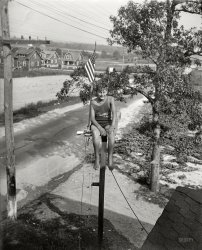
- Street Arabs: 1888
- ... mother remembered it as "like the Airedales."
A-Rab Baltimore once had itinerant street merchants, most with horse and wagon, whom ... Posted by Dave - 02/03/2019 - 7:12pm -
![Street Arabs: 1888 New York circa 1888. "Street Arabs in 'sleeping quarters'." Photo by the Danish-American social reformer Jacob Riis (1849-1914). View full size.
How the other half poses. Poorly. The kid on the left is peeking. I'm sure of it.
I believe the young man is dreamigProbably of a nice hot meal and a clean bed.
Sleeping boysSeems to me, that this picture is posed. Look at the smiling face of the left kid. But maybe I'm not right - maybe he's dreaming about warm, clean, cosy bed and pajamas?
The Gilded AgeMr. Vanderbilt, Mr. Morgan, Mr. Rockefeller, Mr. Carnegie -- anyone?
Forty wink-winksSure, those three young fellows really fell asleep like that. And there's some oceanfront property in Nebraska you need to check out before it's all gone.
Forty wink-winksSure, those three young fellows really fell asleep like that. And there's some oceanfront property in Nebraska that you need to check out before it's all gone.
Two-way streetI wonder which way it went in popular lingo: From street arab to street urchin or vice-versa?
Nomads Without the CamelsSo Google tells me "Street Arab" is a now archaic way of saying homeless street kid. I had no idea. I bet there was story behind that term, when it was in use.
NewsiesThe way these streets urchins survived was to sell newspapers, go through garbage, and even pick up dog feces. The latter was sold to local tanneries. I had a cousin who did this to survive. He became successful accountant.
Look at the eyesYou can fall asleep in some of the weirdest places, and I certainly have, but looking at the eyelids, it looks like there is some tension in the forehead that suggests they're squeezing them shut for the picture. I also notice that their cheeks are filled out nicely, as if they're at least somehow getting enough to eat, their hands show evidence of work and dirt, and their hair looks combed. I'm guessing they're actually tenement residents whose parents send them out to beg/whatever.
Maybe the photographer took them out for a bite to eat afterwards. I hope he did.
What's Real?The clothes, holes and dirt don't look staged to me.
Longfellow The Day Is DoneAnd the night shall be filled with music,
And the cares, that infest the day,
Shall fold their tents, like the Arabs,
And as silently steal away.
James Thurber's mother remembered it as "like the Airedales."
A-RabBaltimore once had itinerant street merchants, most with horse and wagon, whom the locals called A-Rabs. They did everything from sell produce to collect rags and scrap, but the term was pronounced with a long A.
No doubt an adaptation of the term used in this photo, though I can only guess at the etymology … perhaps the crowds of mendicant children one could observe in the cities of North Africa in former days?
[They're "Arabs" because they're nomadic, wandering from place to place. - Dave]
(The Gallery, Kids, NYC)](https://www.shorpy.com/files/images/SHORPY-00037u.thumbnail.jpg)
- Her Own Biggest Fan: 1927
- ... member of a prominent family . Mrs. John Douglass Wade, Baltimore, Maryland, granddaughter of Louisa Airey Gilmor (Mrs Samuel Owings ... Posted by Dave - 04/14/2015 - 4:06pm -
![Her Own Biggest Fan: 1927 Washington, D.C., or vicinity, 1927. "Woman at campsite with fan display." The card enlarged here. Harris & Ewing Collection glass negative. View full size.
Definitely not an 1820's fanlindab is quite right... the fashions of the ladies on the fan are from around 1840-1850, not the 1820's. You can see this especially on the woman sitting on the bank to the right.
A few clues... The 1820's sleeve was frequently fitted through the arm, sometimes with a small puff at the top, where these sleeves are fitted in the upper arm and bell out at the wrists, a style that developed into the "Pagoda" sleeve of 1860's. The 1820's skirts were high waisted and a-line with more fullness captured at the center back, where these skirts are natural waisted and clearly full, almost dome-shaped, heading towards the large crinoline hoop skirts.
Of course, since this is 1927, the note taker could have been off just fifteen years, and this fan might be from 1842. Possible...
The FanAppears to be conveying a vaguely religious theme, perhaps a deceased soul being borne to the other side of the river where it's received by its former loved ones? The prone figure has a death's head while the one in the center is the only one looking heavenward and with a halo around her head, the soul of the deceased.
Fannotated"100 yrs. old"
A daredevil aviatrix?A possible clue to the lady. She might have liked flying or fliers, judging by the airplane pin at her throat.
A Lindbergh Fan?Just noticed the airplane pin at her collar.
PinI that a "Spirit of St.Louis" pin she's wearing?
Sky QueenThe fan is fine, but the airplane on her neck is awesome!
This pinThere were many designs for her to choose from, with and without rhinestones, and this looks like the one she chose.
Fan not as old as they sayThe ladies illustrated on the beautiful fan are wearing hoop skirts and hairstyles from the 1850s at the very earliest, so in 1927 it would have been at most 70+ years old. The girl, however, is charming, and I love it that she's wearing dress shoes and stockings on a camping trip.
[This looks like the 1820s to me. - Dave]
Okay, I'm stumpedWhy would you take your antique fan collection on a camping trip?
[Old flies! - Dave]
More fannotationFan belonging
to
Mrs. John Douglas (Wade?)
100 yrs old
belonging to her grand?
mother?
The precision of the name vs the rest of the script makes this look to be a marked up calling card.
Prominent familyIf Baltfan is correct in deciphering that text, this might be a member of a prominent family. Mrs. John Douglass Wade, Baltimore, Maryland, granddaughter of Louisa Airey Gilmor (Mrs Samuel Owings Hoffman), married May 9, 1826, hence the 100 years old comment.
(The Gallery, Camping, D.C., Harris + Ewing, Pretty Girls)](https://www.shorpy.com/files/images/SHORPY-34547a.thumbnail.jpg)























